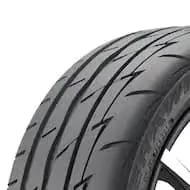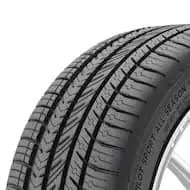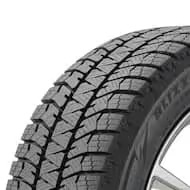Tire Service
Here at Capital Honda, we will price match any tires. Browse all brands and types of tires and get your Alignment checked from our trusted, certified service department..
ScheduleService Specials

Tire Rotation
Rotate Your Tires Every 5,000 Miles for Optimal Wear

Buy Tires at Our Cost!
Now is the best time to get fresh tires before the winter season starts. Better tires mean better drives. Upgrade now and feel the difference.
Certified Tire Replacement at Capital Honda
At Capital Honda, we offer a full range of tire services to ensure your vehicle performs at its best. From tire rotations and air pressure checks to regular inspections, our skilled technicians work to maximize the lifespan of your tires while improving handling and fuel efficiency. Our team will carefully inspect your tires for any wear and tear. If your vehicle is in need of new tires, we will mount and balance them and perform an alignment to help with even wear. Whether you need routine maintenance or a complete tire upgrade, our certified team here at Capital Honda is dedicated to delivering top-notch service giving you peace of mind for miles to come.
Signs of Worn Tires
Tires are an important part of your vehicle, helping to keep you driving straight on the road as well as helping with braking and traction during wet and snowy conditions. Unsure if your tires need replaced? The following are some examples of when your tires need replaced.
Tread depth: One way to check for worn tires is to measure the tires tread depth. When your vehicle's tread depth is less than 2/32 of an inch deep then it is time to replace your tires.
Tread wear indicator bars: Many tires have built-in tread wear indicator bars that become visible when the tire tread has worn down to a certain point. These bars can usually be found in the grooves between the tire tread blocks. If the bars are visible, it's time to replace your tires.
Uneven wear: If your tires are worn unevenly, it may indicate an alignment or suspension problem. Look for signs of cupping, feathering, or uneven wear on the tire tread.
Age: Even if your tires look fine, they may still be worn if they are too old. Most tire manufacturers recommend replacing tires after six years, regardless of their condition.
If you notice any of these signs, then be sure to schedule with one of our service departments here at Capital Honda to get a new set of tires put on your vehicle.
Types of Tires
Summer Tires

Summer tires are designed for optimal performance in warm weather conditions. They feature a tread pattern with larger tread blocks and shallower grooves to provide better grip on dry roads. Summer tires offer excellent handling, responsive steering, and superior traction on both wet and dry surfaces. However, they are not suitable for cold or snowy conditions.
All-Season Tires

All-season tires are a popular choice for many drivers as they offer a balanced performance in different weather conditions. These tires are designed to provide good traction on both dry and wet surfaces, as well as moderate performance in light snow. They offer a comfortable ride and longer tread life compared to specialized tires.
Winter Tires

Winter tires, also known as snow tires, are specifically engineered to deliver superior traction and handling in snowy, icy, and cold conditions. They feature a tread pattern with larger gaps and unique rubber compounds that remain pliable in freezing temperatures. Winter tires help improve braking and cornering performance, providing enhanced safety in winter weather.
HONDA TIRE SERVICES
Click a service below to watch an informative video.
TIRE REPLACEMENT FAQs
Certified Wheel Alignment at Capital Honda
Wheel alignment service is an important service to prevent your vehicle tires from wearing down unevenly. Your vehicle’s wheels are suppose to be perpendicular to the ground and parallel with each other but over time they get out of alignment. At Capital Honda, one of our certified technicians will use specialized equipment to measure the angles of the wheels and make adjustments as needed to ensure proper alignment. This typically involves adjusting the camber, caster, and toe angles of the wheels to the manufacturer’s specifications.